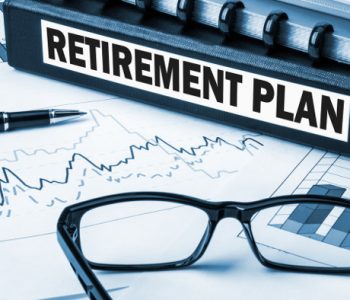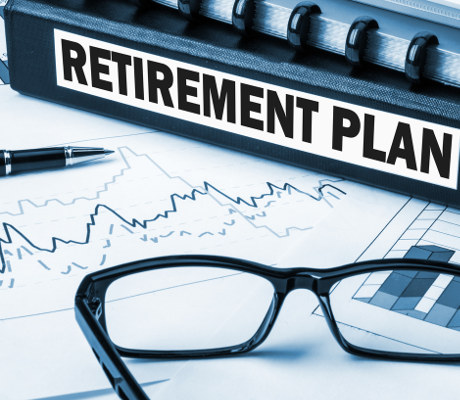Types of Employer-Sponsored Retirement Plans

Types of Employer-Sponsored Retirement Plans
One important factor that many employees forgot to ask their employers about is the company’s retirement plan. After all, for most, retirement still far in the future, so there is no sense of urgency to get answers. Normally, an employee’s primary concern about their retirement plan is how much they will be paid and what medical benefits they will receive. They may also be wondering if a retirement account is available.
Doing research on retirement plans could be very beneficial. There are some employers that will take all the risk and fund all retirement accounts for their employees, while others require the employee to make a contribution, which their employer then matches. These types of retirement account are known as employer-sponsored retirement plans. Companies offer these accounts to add to the overall compensation for their employees, encouraging them to plan early for retirement.
Many people dream of retirement, so knowing this and other information about the different types of retirement plans could help reach those goals. There are many different accounts available, with different benefits for employer and employee alike. This article will go through different retirement plans offered, listing the various types of employer sponsored retirement plans, with more information on each.
Also Read: 5 Tips to Choose the Best Retirement Plan
List of Employer-Sponsored Retirement Plans
1. Defined Benefit Plan
A defined benefit plan offers certainty to the employer and employees. The plan provides a fixed amount that will be paid to an employee when they retire based on the average salary earned, age, and years of service. All investment decisions within the portfolio and contributions will be made by the employer.
Once the calculation has been made, there is no possibility of retroactively decreasing the payout amount. If there is a later increase in salary, the expected payout at retirement will increase as well. The payments are traditionally monthly, though lump-sum payments also occur if the employee leaves the company early. Employees cannot take out the money until they are 62 years old.
There are many benefits of a defined benefit plan, such as not needing to worry about the performance of the assets within the portfolio. If the markets happened to underperform and there was a shortfall of the payment to all retirees, it would be the responsibility (and therefore, the risk) of the company to ensure the payments are made.
Employers tend to use defined benefit plans to attract top-level talent. They also encourage people to stay with the company longer, since there will be a guaranteed payout upon retirement.
2. 401(k) Plan
A 401(k) is normally used by larger companies. A defined contribution plan, 401(k)s are funded by employees with most employers matching the contribution.
The most common method of contributing to a 401(k) is deducting money from each paycheck to make a regular contribution. The employer should match the contribution shortly after.
The funds within the account are controlled by the employee, so they can decide which investments they wish to hold. Their contributions are tax-deductible for the year they were made in. Also, any gains or income earned within the account will be tax-deferred until withdrawals are made during retirement.
If an employee decided to leave the employer, then the account could be transferred to a traditional IRA or into a 401(k) with another employer. No taxes would be applied in this instance.
After the age of 59-and-a-half, there are no tax penalties if a withdrawal is made. If a withdraw is made before that, then there is a 10% tax applied. If a withdraw was made within the first two years of the plan, then the tax rate will increase to 25%.
Also Read: 5 Retirement Planning Do’s and Don’ts
3. 403(b) Plan
A 403(b) plan is the same as a 401(k) plan, except that it is used for non-profit organizations. This would include associations of churches, welfare service agencies, hospitals, home health service agencies, and public school systems.
The majority of the accounts are funded by the employees and the contributions are tax-deductible. An employer’s contributions can be up to a certain percentage of the employee’s salary.
The employer will choose the company that the investment will be held with, while the investment decisions are made by the employees.
In order to take money out of a 403(b) plan, one of the following must occur:
- The plan is terminated
- The employee encounters financial hardship
- The employee has reached the age of 59-and-a-half
- The employee dies, in which case the funds will be given to their beneficiary
- The employee becomes disabled
4. SIMPLE IRA
A Savings Incentive Match PLan for Employees (SIMPLE) IRA plan allows employees and employers make a contribution to a traditional IRA.
A company must have 100 or fewer employees in order to be eligible to start a SIMPLE IRA plan. Self-employed individuals may also take advantage of this.
Employers must contribute every year, no matter how the business has performed. This method serves as a good means of setting up a retirement plan for employees because it is easy and inexpensive to start and operate. Employees have a choice of whether or not to make a contribution.
Companies open a SIMPLE IRA plan so their employees have a retirement plan in place and employees can get assistance starting one. This also encourages staff to think about their retirement and plan early for it.
The funds within the IRA are vested, which means they will not be available to be withdrawn for a certain period. Typically, the average vested time period is two years, and if an employee left the company within that period, then the employer would take back the money it contributed. A vesting restriction is put in place to encourage employees to stay with the business longer.
5. Simplified Employee Pension Pan (SEP)
A simplified employee pension plan (SEP) can be set up for individuals that are self-employed or operating a small business with 25 or fewer employees.
All contributions that are made within the plan are tax-deductible and both employees and employers can contribute, with the latter needing to match the former’s contributions. That said, employer contributions are not mandatory if the capital is unavailable.
Many employees contribute to their SEP plan on a regular basis via their paycheck.
6. Money Purchase Pension Plan
A money purchase pension plan is a retirement plan contributed to by both parties, with the company required to add to the plan each year. The contribution is based on a percentage basis of the employee’s salary when the plan is set up. Contributions are tax-deferred.
When an employee decides to retire, the total capital is put into a lifetime annuity. An annuity is a fixed amount that is paid to the retiree on an annual basis.
A employer can use a money purchase pension plan in addition to other retirement plans as well. Any business is able to establish such a plan, regardless of size.
In order to be eligible, an employee must be at least 21 and have been with the company for at least three years. The invested funds are automatically vested, regardless of when the person’s employment at the business ends. This means that the funds are tied up within the plan and the employee cannot take the money out before leaving the company or retiring.
7. Profit-Sharing Plan
A profit-sharing plan gives employers a lot of flexibility to make contributions into their retirement accounts. There is no requirement to put money into the plan, as employers are responsible for contributions.
Said contributions into a profit-sharing plan are based upon the business’ earnings. If the company decides if there is enough money to make a contribution, then it will not do so. The money may be reinvested into the business for the sake of growth.
This is a great plan that can be best used by companies that have unsteady and unreliable earnings, since they are not obligated to make a retirement payment if it is not feasible. Some employees may even work harder solely for the sake of this plan in order to improve the business’ performance and, with it, the amount added to the plan.
When contributions are made, the same percentage must be applied to all employees. If a withdrawal from the plan occurs before the age of 59-and-a-half, then a 10% tax penalty will be applied. The purpose of the tax penalty is so employees think twice before withdrawing funds.
Also Read: Tips to Start Saving for Your Retirement











